This resource has been compiled by a mom/family who attends the Tridentine Mass. It was created with great care but it is not meant to replace Holy Liturgies. The blessings made in the home following these liturgies are only to provide a learning resource for the family as we observe the most fruitful time of the year as never before – under orders to stay home during this epidemic. They are not valid blessings — Missa Sicca (Dry Mass).
We follow the Pre-1955 liturgies for Holy Week. Below is an overview of our Holy Week Plans. It does not include any activity/craft that we will be doing with our children. It’s solely focused on immersing ourselves deeper into the liturgies and ceremonies of this holy week. We did not create any printable as holy religious have already done so. The booklets are linked with each week.
Some commentary (based on Regina Coeli House) is provided on this sheet. It is to be used in union with the commentary (of Blessed Adolph Schuster) provided in the linked booklets. The linked booklets for the traditional liturgies are in Latin & English. We will adapt our home observance based on both commentaries and the liturgies.
The head of the home (Dad) and boys will be serving as priests/deacons/altar servers. Mom and daughters will not be serving in any of these roles (aside from singing when needed) even though it is a Dry Mass and informal ceremonies.
You will also find a brief list of items that you could collect around your home to assist in your observance of this Holy Week at Home.
Please remember that perfection is not needed, do what works best for your family, and is within your means. The ultimate goal is to unite ourselves with Holy Mother Church while going deeper into Her liturgies so we can grow spiritually in this time of sorrow. May this be the most fruitful time of the year for us as Holy Mother Church desires it to be. (Dates will vary per year. The dates listed were for 2020.)
SUPPLIES:
- Palm, Olive, or other Tree Branches (PS)
- Holy Water (to bless palms) (PS)
- Incense (PS)
- 2 Pilar/Taper Candles (PS, GF)
- Veiled Crucifix on long stick/pole (PS) We tape a metal crucifix to a wooden walking stick cover with purple fabric.
- Spiritual reading/prayer book (HT) (for perpetual Adoration before the family Enthronement of the Sacred Heart of Jesus)
- Olive Oil (HT, EV)
- Towel (HT)
- Bowl (HT)
- Water (HT)
- Wooden clapper (HT) (two wooden spoons)
- Fire/Fire Pit (GF)
- Crucifix (GF) (Veneration/Adoration of the Cross) We will use the family crucifix that has been veiled for all of Passiontide.
- Purple cloth (GF)
- Paschal Candle (GF)
- Holy Water Font (GF)
- 3 Prong Candle & Base (EV) (The Triple Candle is a “reed” with three candles or if possible one candle that branches into three, which represents the Holy Trinity. The reformed Holy Week replaced this with the Paschal Candle. At each Lumen Christi one of the candles atop the reed is lit.) We will use 3 pillar candles on a rod iron base.
- Bells (EV)
- Altar & Linens (all days)
- Pre-1955 Missal – St. Andrew’s Missal for Sacred Triduum – or-
- Hebdomada Sancta (Holy Week) booklets (linked below, provided by Pre-1955Holymass.com)
- Spiritual Communion Prayers – offered daily
PS – Palm Sunday | HT – Holy Thursday | GF – Good Friday | EV – Easter Vigil
This is the blessed time which separated the law of severity from the law of grace; which accomplished that of which the voices of the Prophets had sung hundreds of years before; which abolished the parochial Synagogue and gave birth to the Universal Church; which saw the institution of the most august of the Sacraments and the fulfillment of what is most sublime and most tender of those which the most providential God had established for human nature, miserably outraged by the sin of the first man.
It is no wonder, then, if the Catholic Church, in this precious time, uses more elaborate ceremony, deeper piety and veneration, and more numerous and salutary institutions and practices than in all the rest of the year. Holy Mother Church, – in this Week, – blesses and renews the Oil that must sanctify her temples and consecrate her Ministers; she cleans the Altars, on which she offers every day the Flesh of the Immaculate Lamb which nourishes and sanctifies her; she blesses and renews the water which must render her fruitful, and the fire which must enlighten her. This loving Mother did not hold back any care in preparing her children to celebrate worthily the Death and Resurrection of the Saviour and making them worthy of the immense fruits of this mystery. ~ Blessed Adolph Schuster
April 5 PALM SUNDAY
Blessing of Palms, Procession, and Holy Mass 9:30 am
Palm Sunday Play List for the Home
Sprinkle palms with holy water, bless them with incense in preparation for their distribution.
Receive palms kneeling and kiss the hand of the Priest before taking your blessed palm.
The procession will await before the closed front door, chanting of the Gloria, laus et honor Tibi sit before the cross-bearer knocks on the door thrice, then the doors (symbolizing the gates of heaven) are opened and the servers, celebrant (representing Christ taking possession of His kingdom) and the faithful enter into the Church (signifying the Heavenly Jerusalem).
We will recite the blessing for the palms, distribute them, and process around our home. Then we will begin to offer our MIssa Sicca for Palm Sunday.
Replacing the usual Gospel reading, three deacons chant St. Matthew’s account of the dolorous Passion of Our Savior, whose text are divided into three parts: the Christus (Christ), the Chronista (the narrator) and the Synagoga (the Synagogue, a combination of Judas, the Jews, Pontius Pilate, the soldiers and other ridiculers).
April 6
April 7
April 8
Wednesday of Holy Week – Spy Wednesday
Sung Tenebrae 6:30 pm
April 9 MAUNDY THURSDAY
Chrism Mass 9:00 am
Holy Thursday Mass, Eucharistic Procession to Altar of Repose, Stripping of Altar 7:00 pm
Holy Thursday Though plunged into sorrow on Palm Sunday, a brief glimpse of joy is seen on Maundy Thursday, so named after the Mandatum ceremony (or washing of the feet) that occurs on this day during which Our Lord declared, “A new commandment I give to you,” referring to the supernatural charity that should bind mankind. This is also the day on which Christ instituted the priesthood and the Holy Sacrifice of the Mass. While the Last Supper is commemorated in the evening, the elaborate Chrismal Mass is celebrated in the morning hours by the diocesan bishop in his cathedral during which the holy oils of chrism, catechumens and extreme unction are consecrated.
Chrism Mass – morning
After the Consecration but just before concluding the Canon, the Mass is paused and a subdeacon, accompanied by acolytes, brings a violet-covered ampulla (vase) containing olive oil to the table, the bishop consecrates to become the Oleum Infirmorum for administering the sacrament of Extreme Unction.
After Communion, the bishop returns to the table and the ministers of the oils make a procession to and from the sacristy to bring the ampullae containing the olive oil for first making the sacred chrism, followed by the oil of catechumens. The Bishop stirs the fragrant balsam with a little olive oil before pouring the mixture into the vase.
The bishop then breaths the sign of the cross three times upon the mixture, an action that each of the twelve priests repeat. Afterward, the bishop sings three times (each in a higher tone) “Ave, Sanctum Chrisma,” finally kissing the vase’s side.
The Oleum Catechumenorum is consecrated in the same manner (but without the addition of basalm). The Mass is concluded with Ite, missa est, chanted by the deacon facing the ministers and faithful.
We will set out oil and offer instruction about the Chrism Mass.
Holy Thursday Mass – evening
The Mass does not include the ceremony during which the celebrant washes the feet of twelve men as the Divine Master did to His Apostles. This is completed outside the sanctuary in a separate ceremony.
We will do the washing of feet before Mass in the kitchen.
Twelve men will have their feet washed during the Mandatum, ceremony that signifies humility, charity and the cleansing power of grace upon the soul.
The celebrant wears an apron, pours the water over the right foot, and then he washes the foot.
We will begin our Missa Sicca
Commemorates the First Mass offered by Our Lord Jesus Christ in anticipation of His Crucifixion.
In the lower chapel, two altar servers light the candles at the altar of repose during Communion in preparation for the Translation of the Blessed Sacrament.
When Mass is concluded, the Blessed Sacrament is removed to the altar of repose, where a vigil is kept until midnight, signifying Our Lord’s agony in the garden. Before the ceremonies are completed though, the Diviserunt (or stripping of the altars) takes place.
Having placed the Sanctissimum at the altar of repose, the ministers removed their upper vestments and then proceeded to strip the altars completely leaving just the veiled altar cross and two candles. The deacon removes the altar cloths while the servers wait to receive them.
The high altar is stripped.
Compline immediately follows.
We will pray Tenebrae for Holy Thursday. All family members, including children, will take time to sit before our Lord/Enthronement of the Sacrament Heart of Jesus and Adoration until midnight.
Where possible, in order to engender the liturgical mood of having lost the Real Presence in the church, the altar of repose should be out of view and closed to the public after midnight on Holy Thursday.
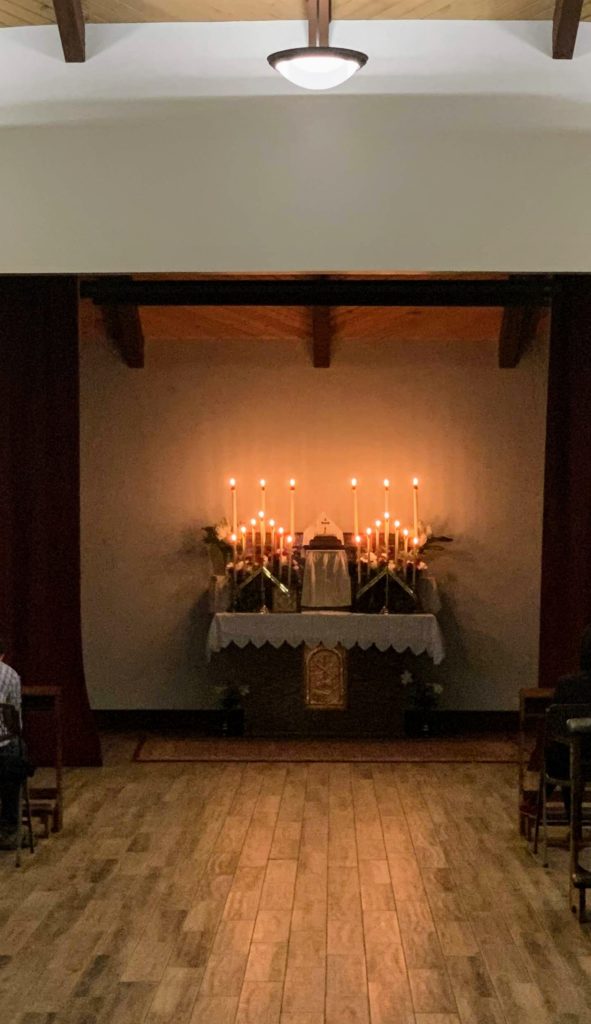
April 10 GOOD FRIDAY
Stations of the Cross 1:30 pm
Good Friday Liturgy 3:00 pm
Followed by Sung Tenebrae for Good Friday
Good Friday – Extreme sorrow for Our Lord’s Passion penetrates the unique ceremonies of the Solemn Afternoon Liturgy for Good Friday, during which many practices of the ancient form of the Roman Mass can be witnessed. Mixed in with the austere Roman character of this liturgical rite are some Eastern influences, namely the Veneration of the Cross (derived from a custom practiced in Jerusalem with the True Cross).
Having processed in silence into the sanctuary, the celebrant and deacon immediately make the Solemn Prostration. This profound act of reverence is made instead of genuflecting, to demonstrate the extreme sorrow and the sacred ministers’ sense of unworthiness to officiate at the altar due to their faults.
Following the old Roman Mass structure, here a lector from the schola chants the first of the two lessons that proceed the Passion (which replaces the Gospel).
After the lessons, responsories, and prayers, three deacons bow before the bishop at his throne and request his permission to chant the Passion related by the Beloved Disciple, who was an actual eyewitness of Christ’s crucifixion.
After the Passion is sung, the deacon brings in the veiled cross flanked by two acolytes carrying candles in preparation for its veneration by all in the chapel.
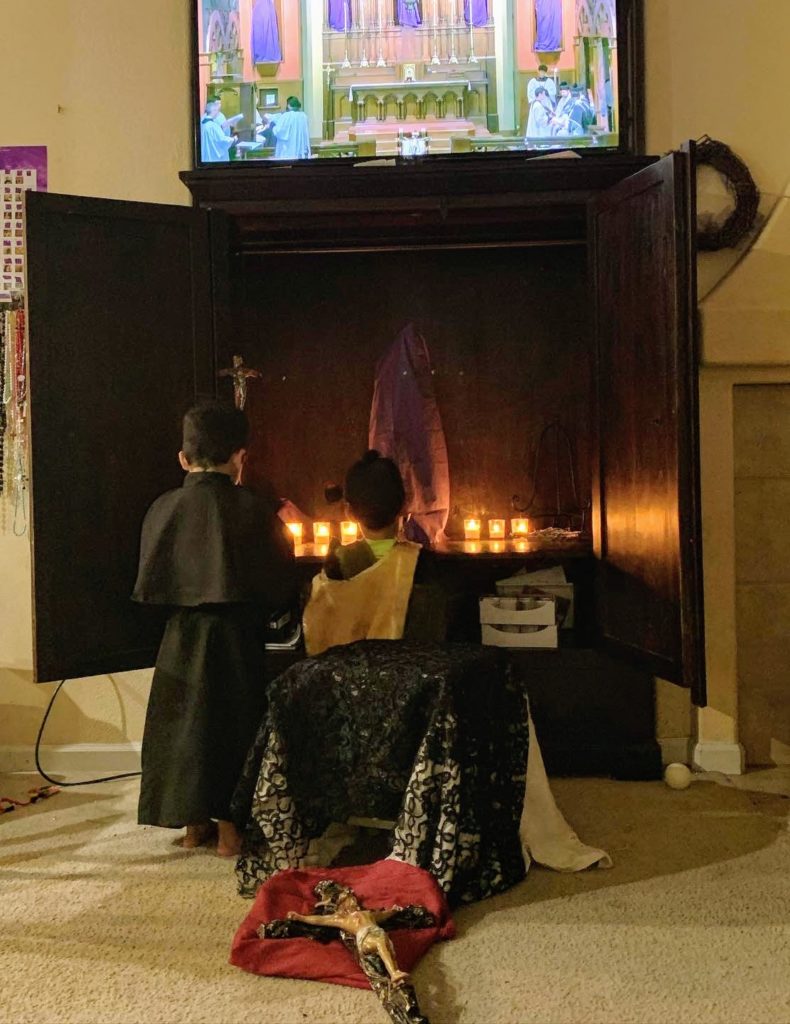
We will place the cross on a purple cloth on the floor to be venerated by each family member.
With the assistance of the deacon and subdeacon, the priest implores everyone to “look upon the wood of the cross upon which the Savior of the world hung.” In sorrowful fervor, the faithful reply: “Come, let us adore,” and kneel in common veneration.
Having given away the cross to two acolytes (while the other two acolytes placed their candles on the edges of the predella), the celebrant removes his shoes, then performs the “creeping to the cross” ritual of genuflecting three times while approaching the cross from afar to kiss the foot of the Crucified Savior.
While the faithful venerate the cross, the master of ceremonies removes the violet veil from the altar cross. Then the veils from the side chapels’ altars, and finally the large rood cross.
Remove all veils from crucifixes and holy images.
Vestments are changed from black to violet.
Tenebrae – During the Sacred Triduum, the canonical hours of Matins and Lauds are specially merged into “Tenebrae,” meaning “shadow” or “darkness,” deriving its name not only from one of the responsories sung, but also from the gradual darkness that envelops the church as the candles are extinguished after the recitation of each psalm. After Tenebrae on Good Friday, the church lights are extinguished, signifying the world’s sorrow for the crucifixion and death of Our Savior, and not relit until the entrance of the Paschal Candle during the Easter Vigil.
All candles are extinguished on the Tenebrae hearse, a special candelabra that holds 15 candles, the last representing Our Lord which remains lit until the very end…
…When it is hidden behind the altar (a symbol of Our Lord’s closed tomb; indeed the first Christian altars were built upon the tombs of the martyrs) signifying Christ’s impending Resurrection.
We will extinguish all candles aside from one and turn off all the lights in our home. The lights will remain off until we pray the Easter Vigil. One candle will remain lit to represent Christ. It will be placed behind a missal on our family altar.
April 11
Easter Vigil 7:00 pm

Paschal Vigil – The priest blesses with holy water the Paschal Fire which set against the black of night, vividly demonstrates how the Christ, the Light of the World, dispels the Devil’s darkness. The fire will next be incensed, using coals that were retrieved from the blessed fire.
Surrounded by the smoke of the newly-blessed Paschal Fire, the priest prepares to incise the Paschal Candle with symbols representing Christ, namely the cross, the Greek letters of the Alpha (A) and Omega (Ω) and His five wounds, as well as the year’s numerals (2020), signifying His reign in the present and for eternity
The priest prays: “Light of Christ gloriously resurgent, dispel the darkness of hearts and minds.”
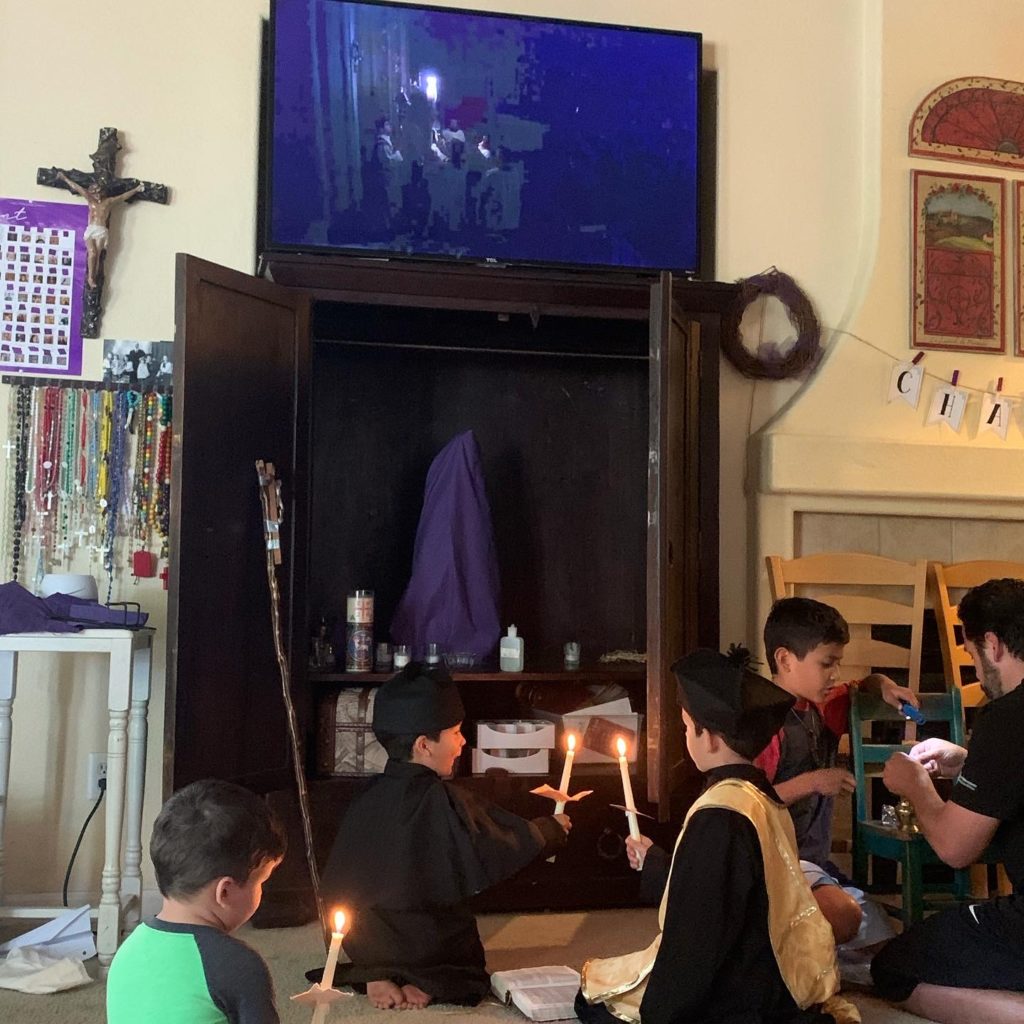
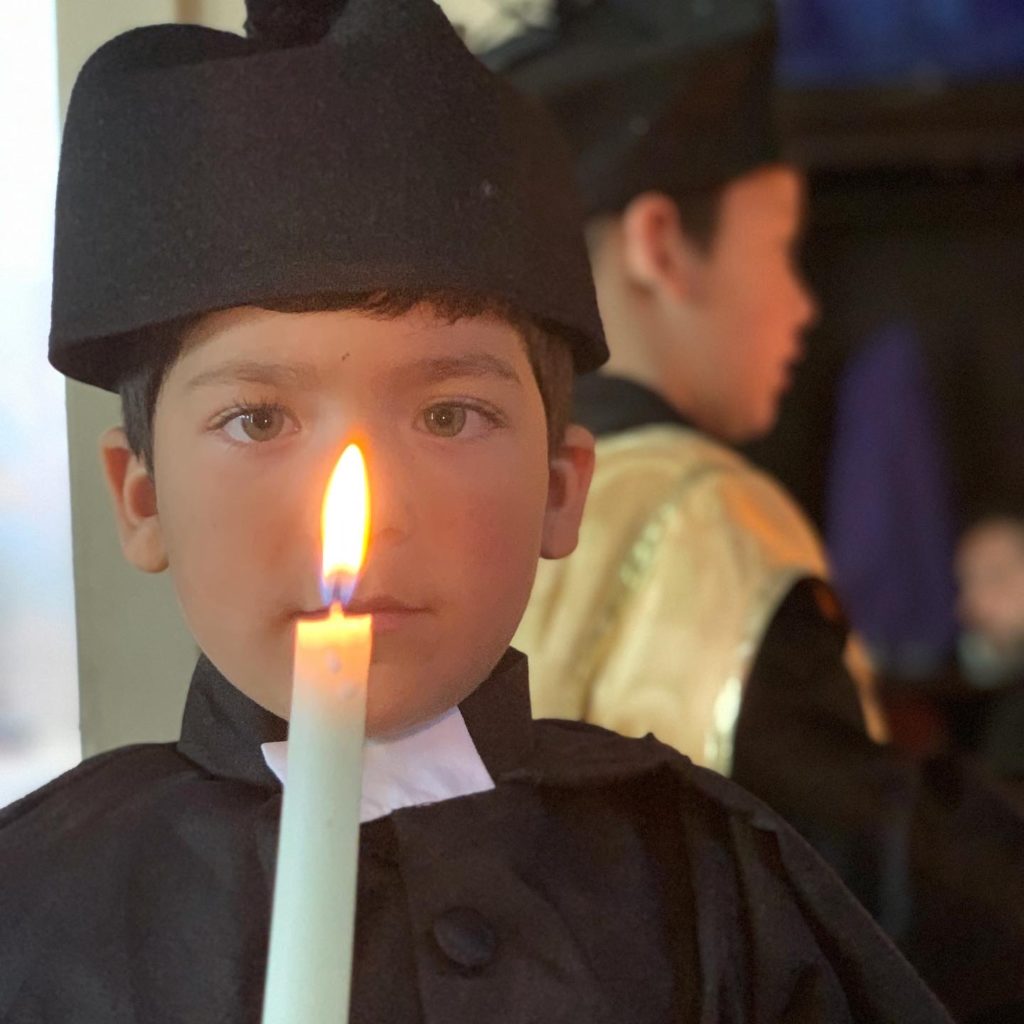
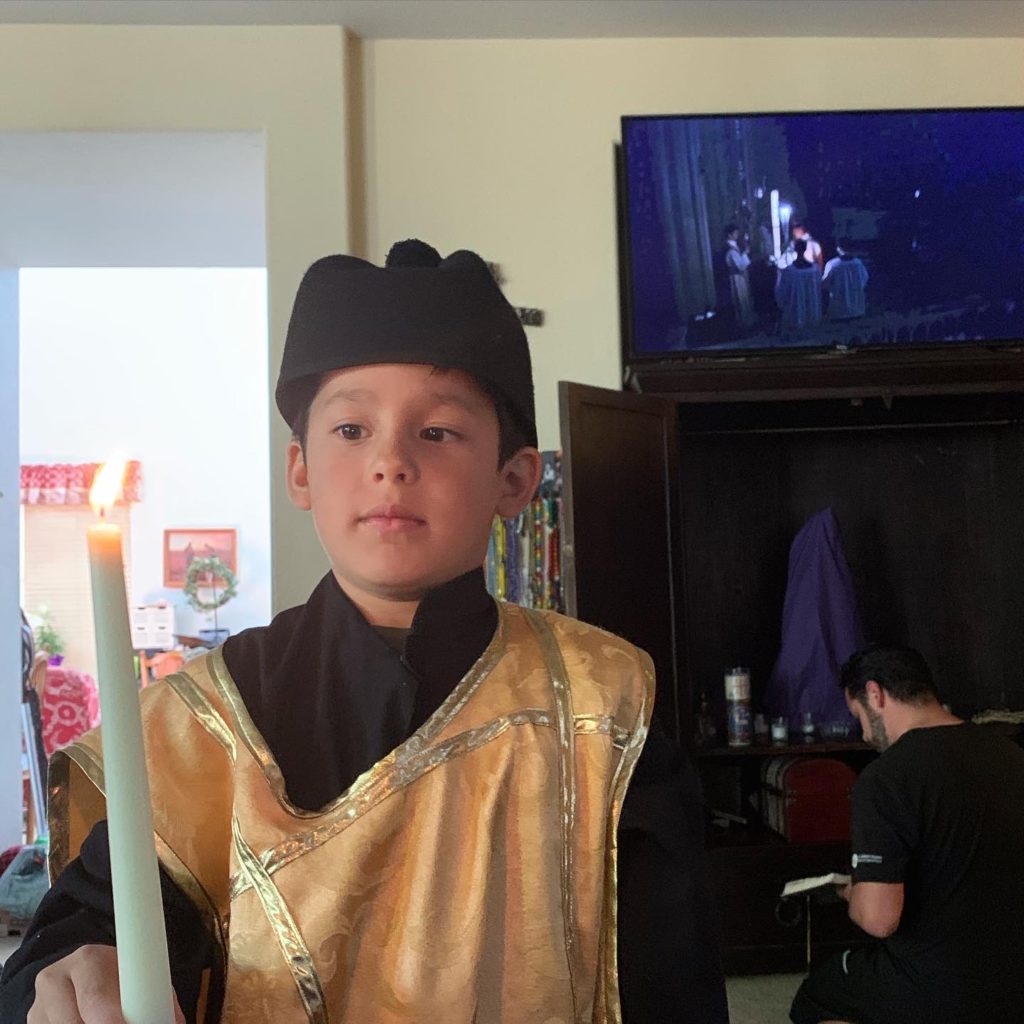
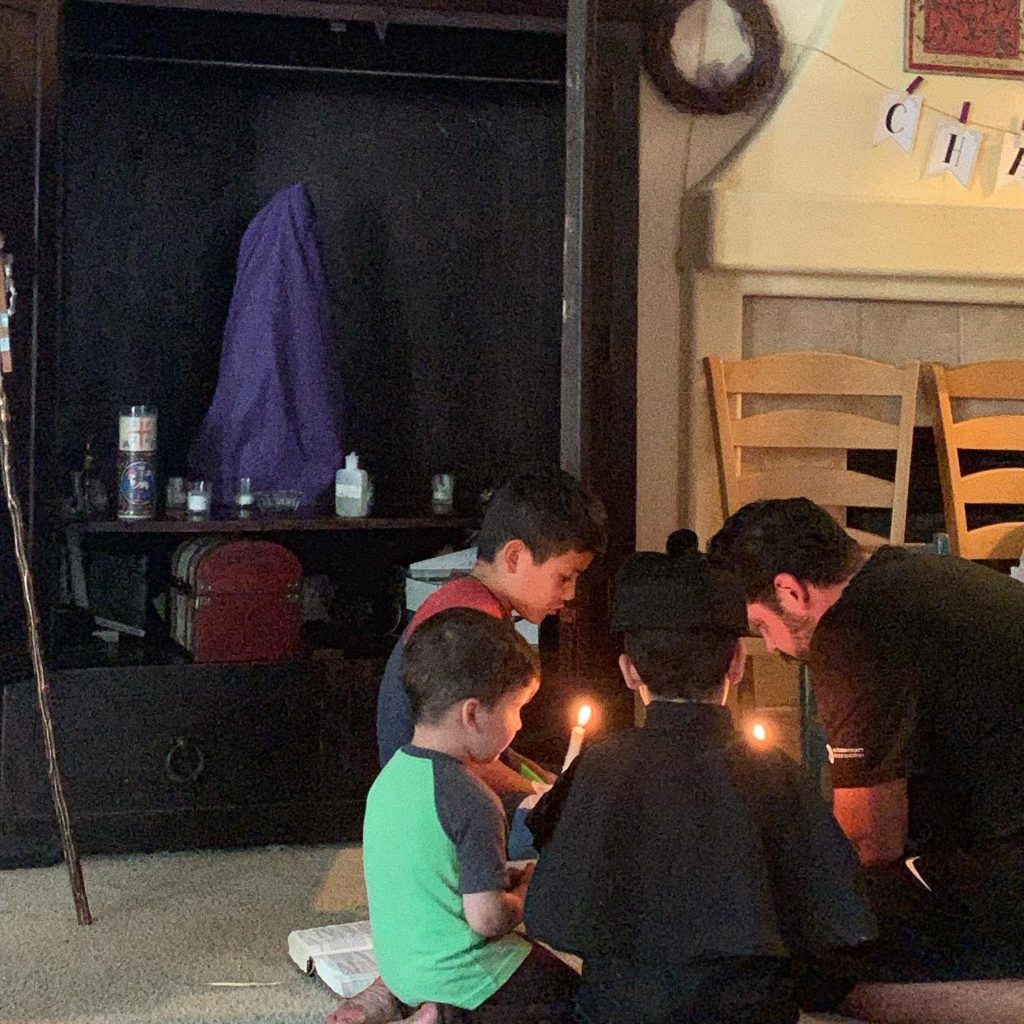
We will have a fire on the front porch and light our 3-pronged candle.
Entering the darkened church, the deacon carries in the Paschal Candle/3 Pronged Candle while chanting three times, each in an ascending tone, “Lumen Christi!” to which all genuflect in veneration and reply, “Deo gratias!”
After the chanting of the Exulstet, four lessons, some responsories and prayers, and the chanting of the first part of the Litany of the Saints, the baptismal water is then blessed. Having already sung the preface style prayer and performed several blessings, the priest plunges three successive times the lighted Paschal Candle while praying: “May the power of the Holy Ghost descend in fullness upon this font.
We will bless the family’s holy water font.
Just consecrated on Holy Thursday, the new holy oils of chrism and of catechumens are successively, then simultaneously, poured into the specially blessed water in the sign of the cross. Now the year’s supply of baptismal water has been prepared.
We will put the oils out.
As occurred in many chapels, having made the regenerative waters of baptism, the priest may prepare to baptize several adult catechumens into the Catholic Faith. Catechumens is baptized by the priest into the Mystical Body of Christ. A newly-baptized adult will receive a white garment which in the ancient Church would be worn by the Christian neophytes from the Easter Vigil until the next Sunday, hence its title Dominica in Albis.
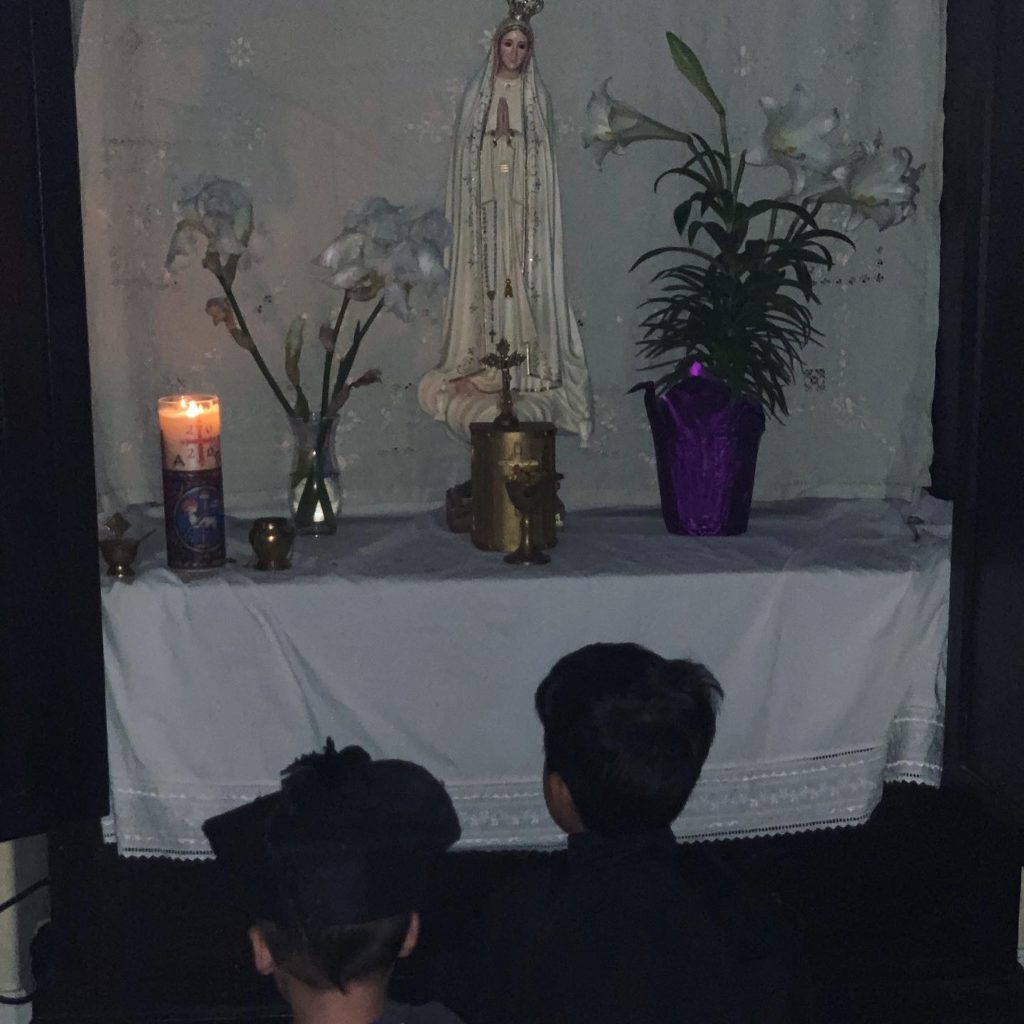
We will offer our Missa Sicca for the Easter Vigil and pray Vespers.
Mass begins with prayers at foot of the Altar. Mass ends with Vespers.
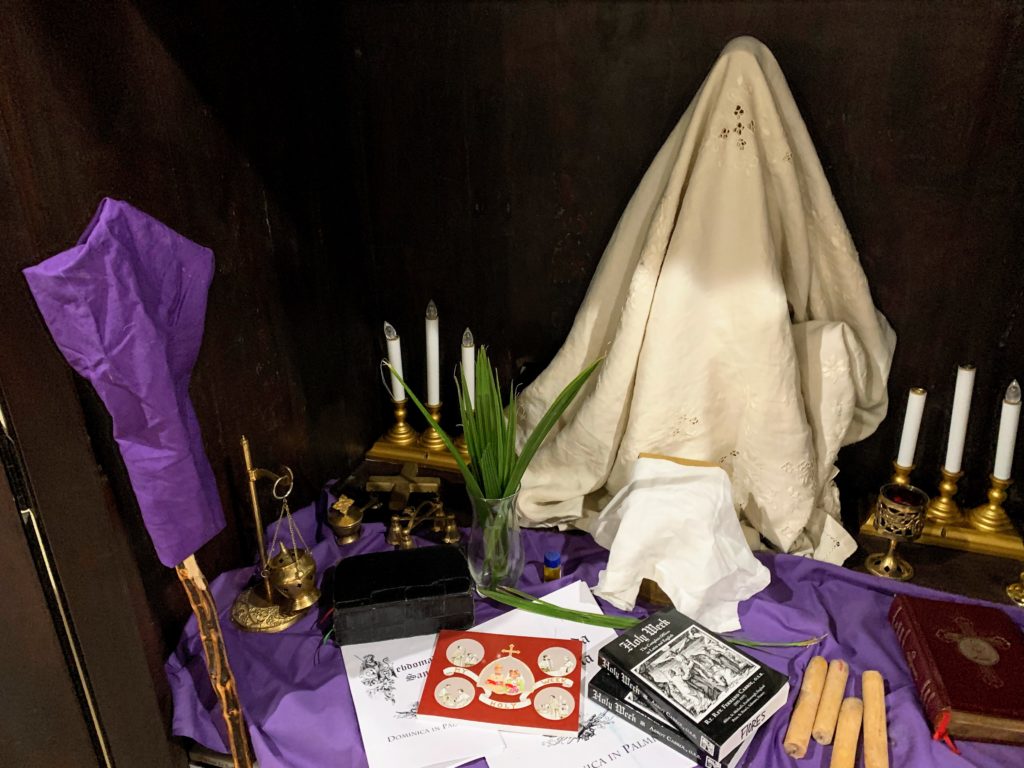
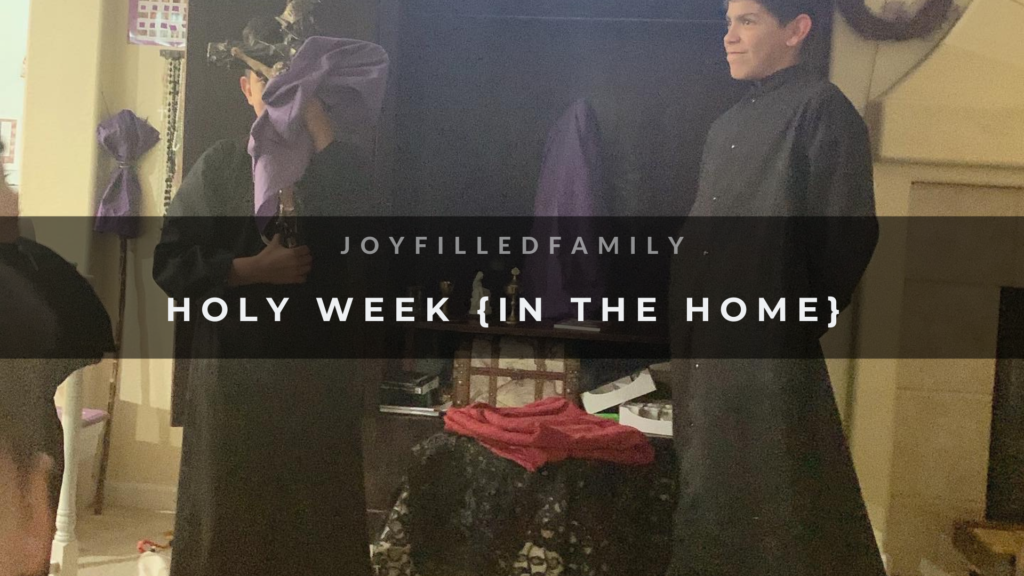
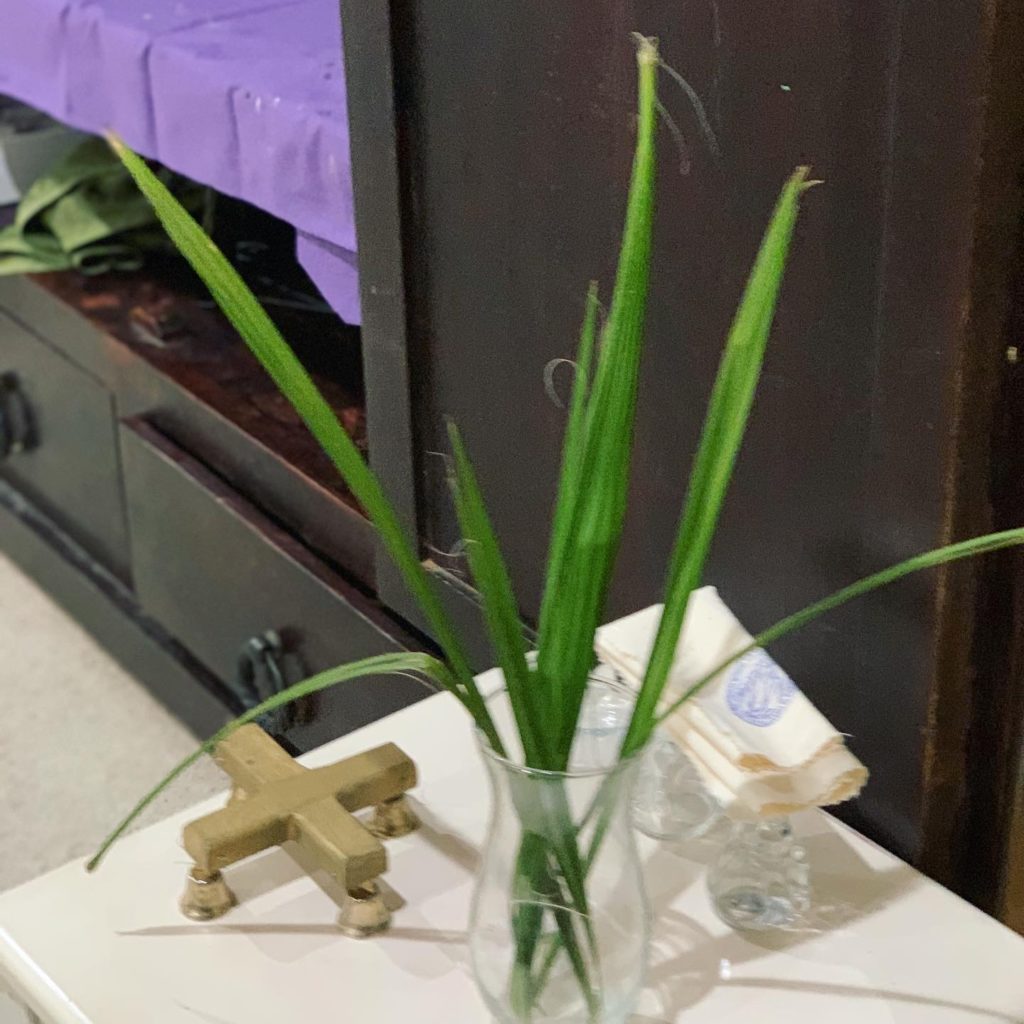


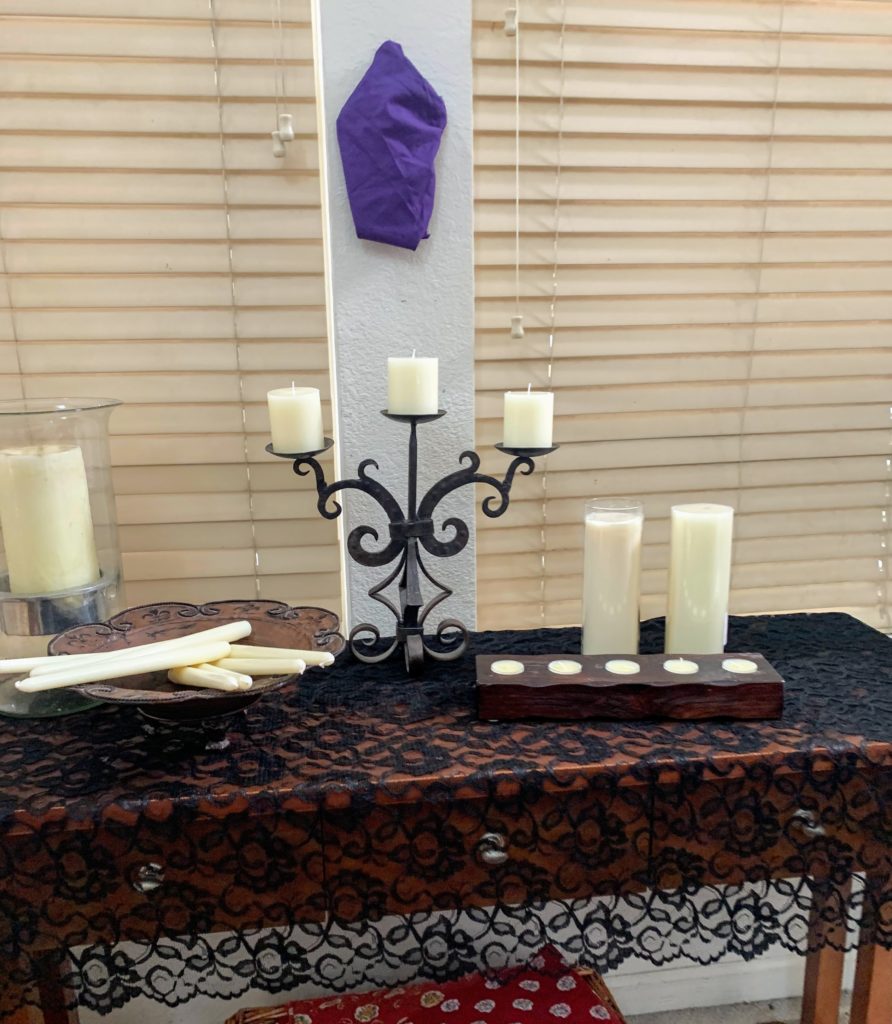
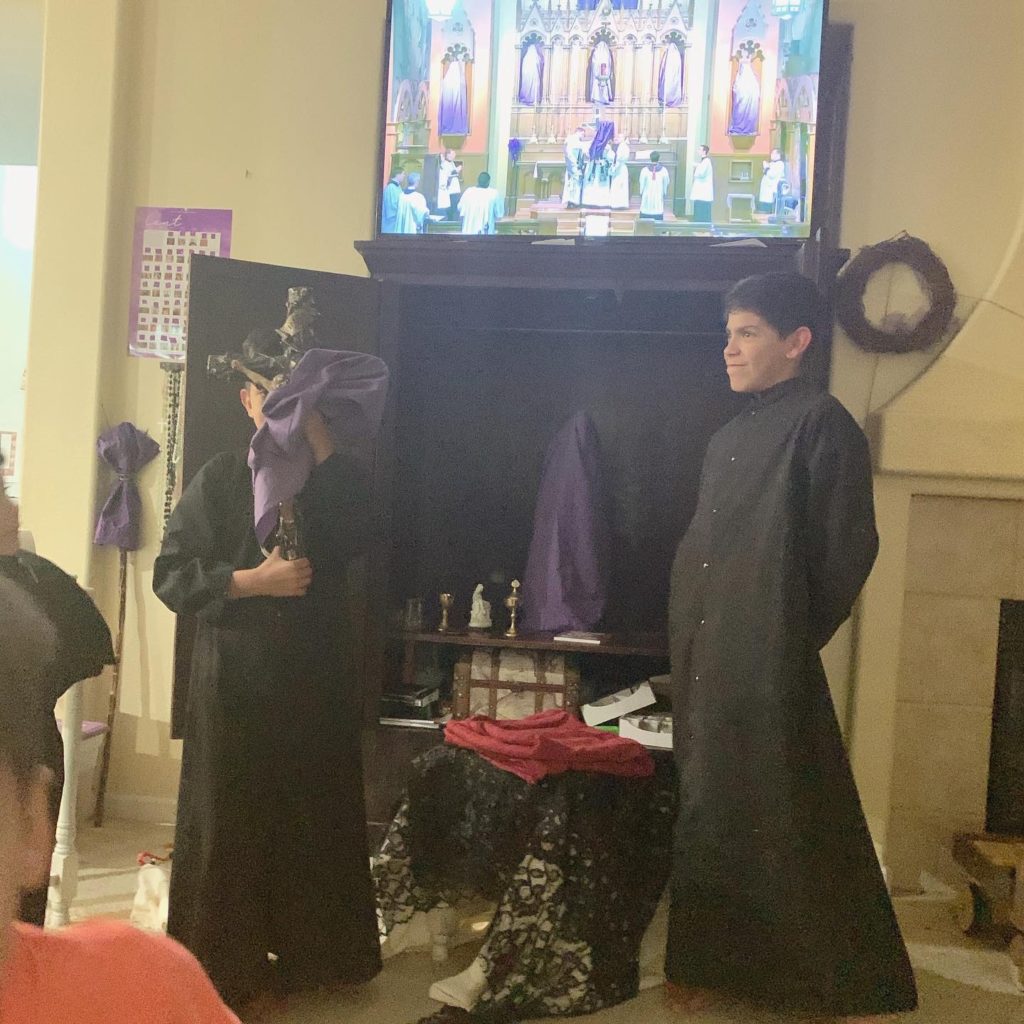
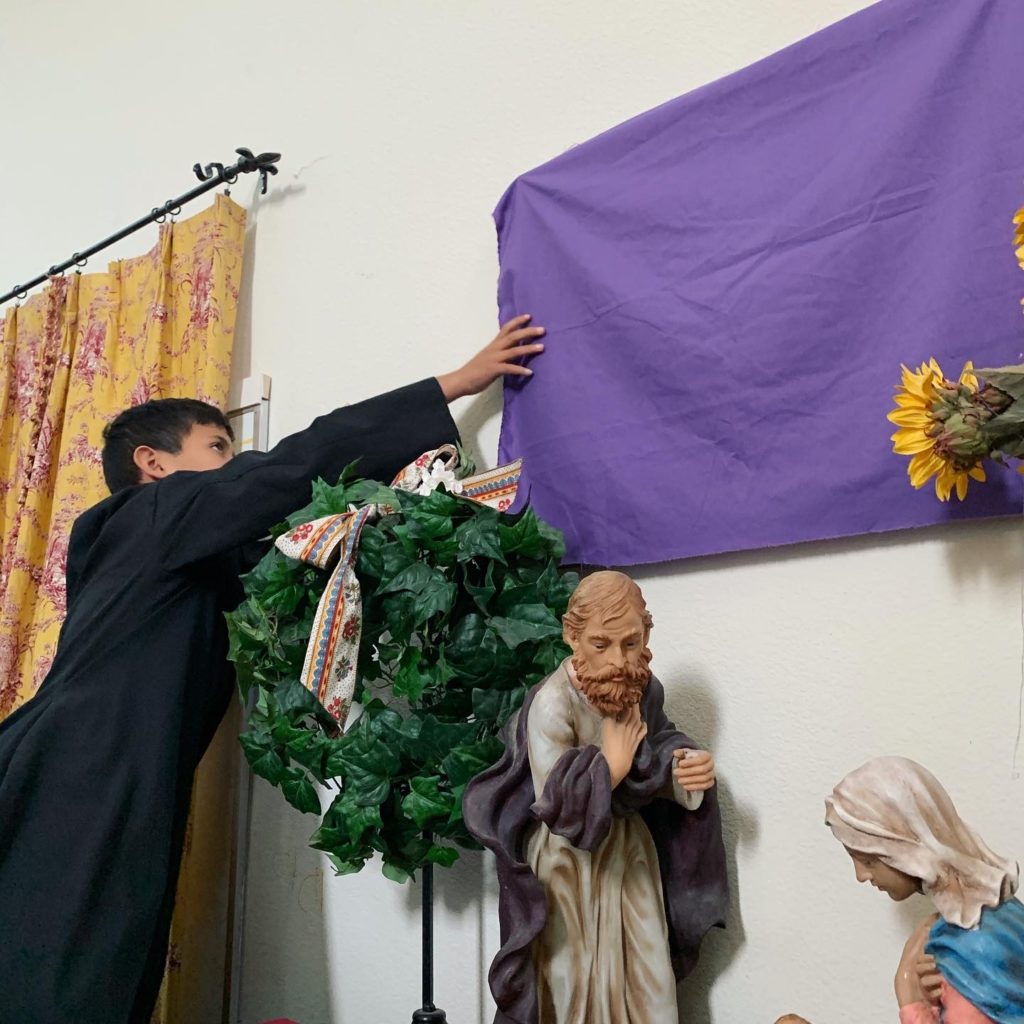

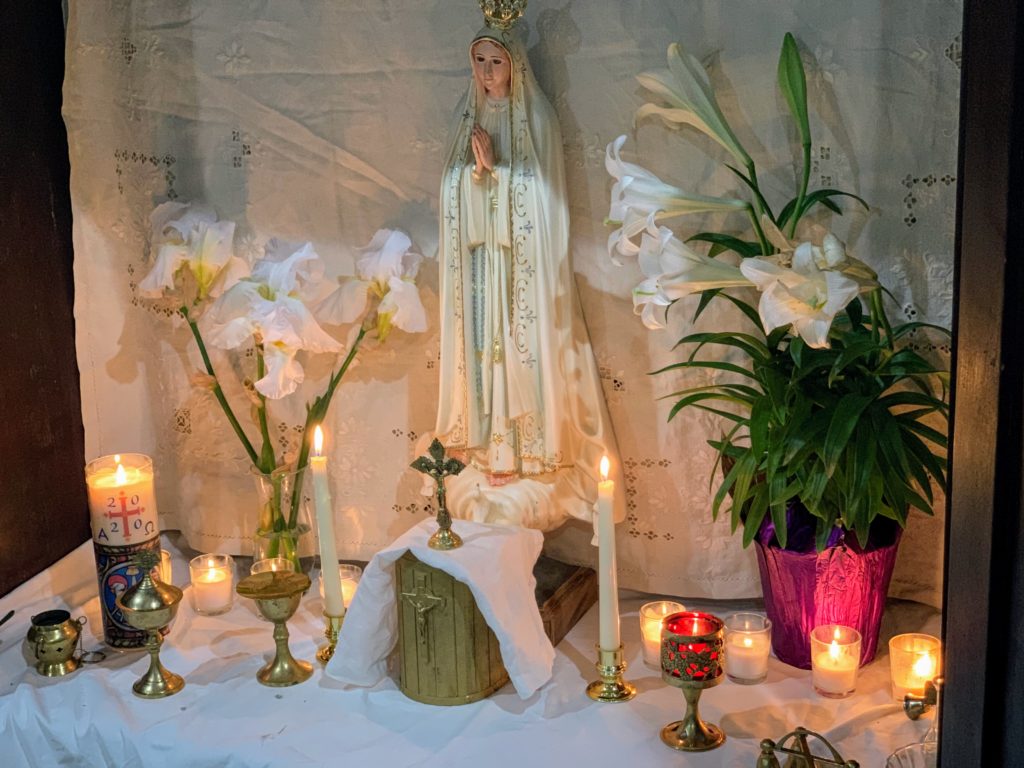
Leave a Reply